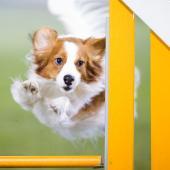Hunting with a dog
The joy and excitement of a dog brings a whole new dimension to the hunting hobby. Even dog owners who do not hunt themselves can offer their pets opportunities to practise their natural tendency.

The joy and excitement of a dog brings a whole new dimension to the hunting hobby. Even dog owners who do not hunt themselves can offer their pets opportunities to practise their natural tendency.

There are many breeds of dogs intended for hunting. In addition to the typical breeds of hunting dogs, such as spitzes and hounds, there are a large number of breeds that were originally bred for hunting. For example, poodles, greyhounds and many water dogs are originally hunting dogs.
However, the breeds that are still used in hunting have best retained their natural hunting instinct. The dog breeds used in hunting are generally very healthy and of healthy build.
Every autumn, approximately 100,000 hunting dogs join their owners in the forest. This is where dogs get to practise their species- and breed-typical behaviour. There is nothing more rewarding for a hunting dog than successful catching.
A hunting dog is happiest when it gets to hunt.
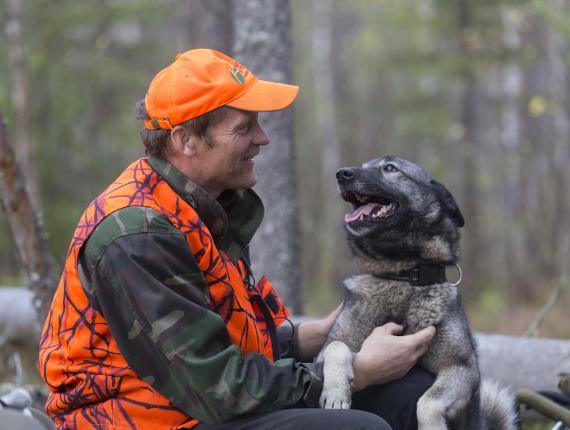
A hunting dog is an invaluable help for humans in the forest. With its keen senses, it finds game and, depending on the breed, can pursue it with persistent barking, mark it precisely by standing or barking next to it or, for example, put it to flight. The dog does not catch or finish off the game – this is done by the hunter. Many breeds are tasked with finding and retrieving the prey.
Each breed of hunting dog is characterised by a specific type of hunting. Some forms of hunting require careful training of the dog, as the dog handler guides the dog during the hunting process. Pointers and retrievers are breeds that require this type of training. For some breeds, such as hounds and spitzes, the ability to work independently is more important. They are ideal for searching for prey in a larger area.
A dog brings a whole new dimension and meaning to hunting. It is rewarding to see the dog work, learn and have a good time. A hunting dog is by far a hunter’s best companion.
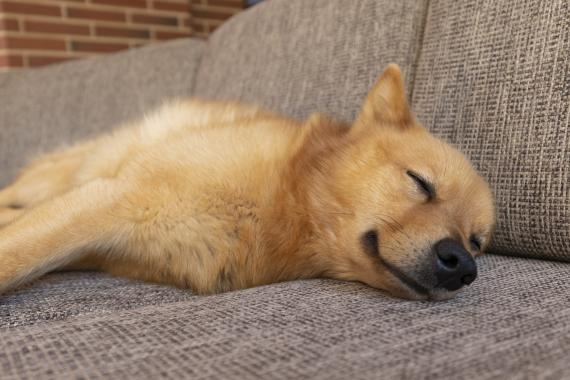
Depending on the hunting period of the game species, the hunting season is usually in autumn or autumn–winter. At other times, a hunting dog lives with its owner and, like other breeds, is a dear family member.
All hunting dogs can and should be trained in basic obedience. Outside the hunting season, dog owners can engage in other activities with their pets, from obedience, agility and tracing training to care dog activities. It all depends on the interests and enthusiasm of the dog and its owner.
But there is one thing you cannot teach a dog. Hunting instinct and perseverance for catching are inherent in hunting dogs. They are essential qualities in hunting.
The importance of hunting in Finnish history is reflected in the fact that three of the five Finnish breeds are hunting dogs. The Finnish Hound, Finnish Spitz and Karelian Bear Dog are vigorous and world-renowned utility dogs with strong hunting instincts. Of the three, the Finnish Spitz is our national dog.


A hound searches for the game and drives it to move. Then, it persistently follows the prey while barking loudly and steadily. The barking indicates to the hunter where the prey is going. Then, the hunter can find a good spot to keep watch. For example, rabbits and foxes are typically hunted with hounds. Small hounds under 39 centimetres in height can also be used to pursue deer, such as roe deer or white-tailed deer. Hounds include the Finnish Hound, Beagle and Drever. Wire-haired dachshunds are also a popular hunting dog.
A spitz barks at the game. With its bark, it tries to keep the animal’s attention on itself and keep it in place so that the hunter can sneak in. Some of the spitz breeds are mainly used to catch grouse, while others are used to catch deer or bears. Spitzes are often versatile and bark at birds, small predators and deer. Spitz-type hunting dogs include the Finnish Spitz, the Norrbottenspets, the Karelian Bear Dog, the Jämthund, the Norwegian Elkhound and Siberian laikas.
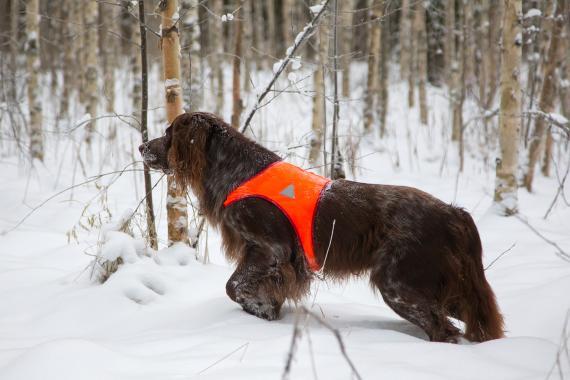
A pointer moves fast in the field, fells or forest ahead of its handler and searches for game in a wide sector. When it detects game, it freezes to indicate where the game is. With the permission of the handler, the pointer drives the game to move and, after receiving permission, retrieves the prey. Pointers act based on good basic training. They are used for catching pheasants and grouse, for example, and are also suitable for catching small predators. Pointer-type hunting dogs include German pointers, setters, and the Brittany Spaniel.
As the name suggests, a retriever specialises in retrieving prey. It is an invaluable help, especially in catching waterfowl, when the prey can fall into the water or disappear into the reeds. A good retriever is excited to swim and retrieves the prey even in difficult terrain. In addition to waterfowl, retrievers are used to catch doves, grouse and other small game. Retrievers include the Labrador, the Golden Retriever, the Springer Spaniel and the Nova Scotia Duck Tolling Retriever. Along with retrievers, pointers are naturally eager to retrieve prey.
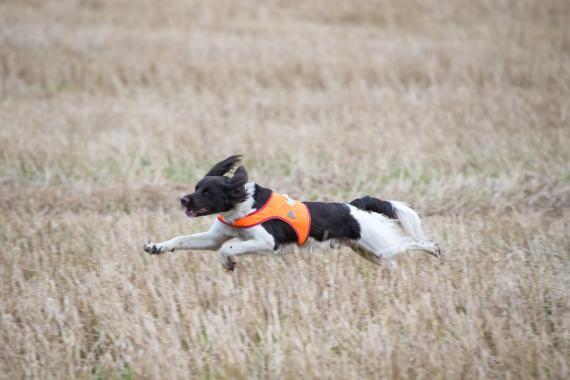
A dog that chases game away puts the game to flight but does not pursue it. These types of dogs are suitable for catching game birds, rabbits, small predators and small deer in small areas. The concept of chasing away is relatively new in Finnish hunting, and care must be taken to ensure that the dog does not pursue the prey, especially in the hunting of deer. Dogs that work in this way include the German Spaniel, spaniels, retrievers and German pointers.
You can join the hunting hobby either as a hunter or as a dog handler.
To become a hunter, you must first complete the hunter examination. In addition, a hunting right is required for the area in question. The hunting right is tied to land ownership, and landowners have often leased the right to a local hunting club. If you are not a member of any hunting club, you can purchase a licence for state-owned hunting grounds managed by Metsähallitus. New hunters must also pass a shooting test for deer, bear and wild boar hunting.
Even if you do not hunt yourself, you can still have your hunting dog engage in species-typical activities. For example, you can take part in retriever or spaniel tendency tests (NOU and SPA) with your dog, or train blood tracing and take part in tracing tests (MEJÄ). MEJÄ tests are open to all dog breeds.
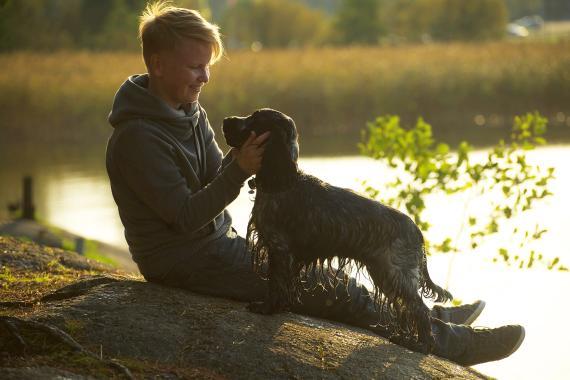
The Finnish Retriever Association (Suomen Noutajakoirajärjestö) maintains the Retriever Exchange (“Noutajapörssi”) on Facebook, through which dogless hunters and retriever owners can find each other and agree on a joint hunting trip. You can ask the local hunting club and familiar hunters for an opportunity to join a hunt as a dog handler. Owners of bloodhounds can also contact the local game management association and offer to help authorities in the tracing of big game after collisions (SRVA activities).
